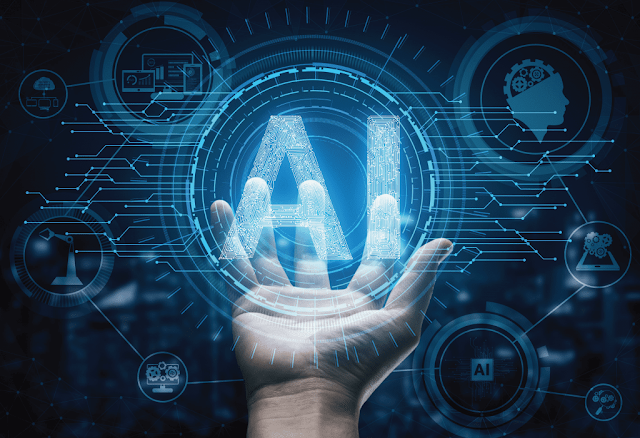Imagine finding yourself lost in a foreign land where no one speaks English or your native language. The streets are unfamiliar, and every turn leads you deeper into confusion. As panic sets in, you stumble upon a poster that looks like it holds the key to your escape. But there’s one problem—it’s written in a language you don’t understand.
Then you remember: your smartphone has a language translation application. You snap a picture of the poster, and within seconds, it translates the text into English. With the newfound information, you navigate your way back to safety. While resting at home, gratitude fills your heart for the developers of this life-saving technology. But curiosity lingers—how does this application work? How did artificial intelligence decipher the foreign text and deliver an accurate translation?
Welcome to the world of Deep Learning—a revolutionary facet of artificial intelligence that mimics the human brain to solve complex problems. In this article, we will uncover the technology behind this incredible application and explore the deep-learning algorithms that made your rescue possible.
Deep Learning: A Brain-Inspired Technology
Deep Learning is a subset of Machine Learning that relies on Artificial Neural Networks (ANNs) to process vast amounts of data. Think of it as a digital simulation of how the human brain learns and makes decisions. These neural networks are trained with thousands—sometimes millions—of examples, enabling them to recognize patterns and generate accurate predictions.
There are different types of neural networks, each suited for specific tasks. Deep Neural Networks (DNN) are commonly used for complex computations, while Convolutional Neural Networks (CNN) specialize in image processing. Generative Adversarial Networks (GAN) create new data based on learned patterns, and Recurrent Neural Networks (RNN) excel at processing sequences, such as text and speech.
Each of these networks plays a crucial role in modern AI applications, from self-driving cars to speech recognition and medical diagnostics.
The Algorithm That Saved Your Life
The translation application that guided you to safety utilized two core neural networks: CNN and RNN. When you took a picture of the poster, a CNN processed the image to extract text. This process, known as Optical Character Recognition (OCR), enables computers to read printed or handwritten text. Over the years, several techniques have been developed to improve OCR accuracy, including image segmentation and object localization. The CNN identified individual letters and words, converting the image into readable text. But your journey to understanding the message was only halfway complete.
Once the text was extracted, it needed to be translated. This is where RNNs came into play. Designed to process sequential data, RNNs are ideal for Natural Language Processing (NLP) applications such as text translation, speech recognition, and sentiment analysis. Over time, different variations of RNNs have emerged, such as Long Short-Term Memory (LSTM), Bidirectional LSTM, and Gated Recurrent Unit (GRU). However, Large Language Models (LLMs), like OpenAI’s GPT, Google’s Gemini, and Anthropic’s Claude, have now taken over, offering unprecedented accuracy and fluency in translation and text comprehension.
The Birth of Large Language Models (LLMs)
Google released the paper “Attention Is All You Need” on June 12, 2017. This groundbreaking paper introduced the Transformer architecture, which eliminated the need for recurrence in sequence-to-sequence models and relied entirely on self-attention mechanisms.
The Transformer model revolutionized deep learning by enabling efficient training on large datasets, making it possible to scale up AI models significantly. Unlike RNNs, which process data sequentially, Transformers process entire sequences at once, drastically improving computational efficiency. This advancement paved the way for models like BERT and GPT, which have transformed natural language processing and led to the sophisticated LLMs we use today.
AI in Africa: A Future of Innovation
AI is transforming industries worldwide, and Africa is no exception. At Zummit Africa, we are committed to building a talent pool of AI experts by providing internship opportunities for aspiring data scientists and engineers. Our goal is to develop AI-driven solutions tailored to solving Africa’s most pressing challenges, from healthcare to agriculture and education.
If you’re passionate about Artificial Intelligence, now is the time to dive deep into the field. Join us at Zummit Africa, and together, let’s shape the future of AI innovation.
Conclusion
The next time you use an AI-powered translation app, remember the incredible deep learning algorithms working behind the scenes. From CNNs extracting text to RNNs translating languages, AI is reshaping our world in ways we never imagined. And this is just the beginning. The true depths of deep learning are yet to be explored.
Enudeme is a driving force behind democratizing AI in Africa. As Founder and CEO of Zummit Africa and co-founder and CEO of Datarango. He is empowering thousands with in-demand AI skills. He brings technical expertise as an AI developer with over four years experience to his mission. Beyond education, he’s also shaping the ethical landscape of AI as a board member with the Nigerian branch of the International Law Association.

Comments
Post a Comment